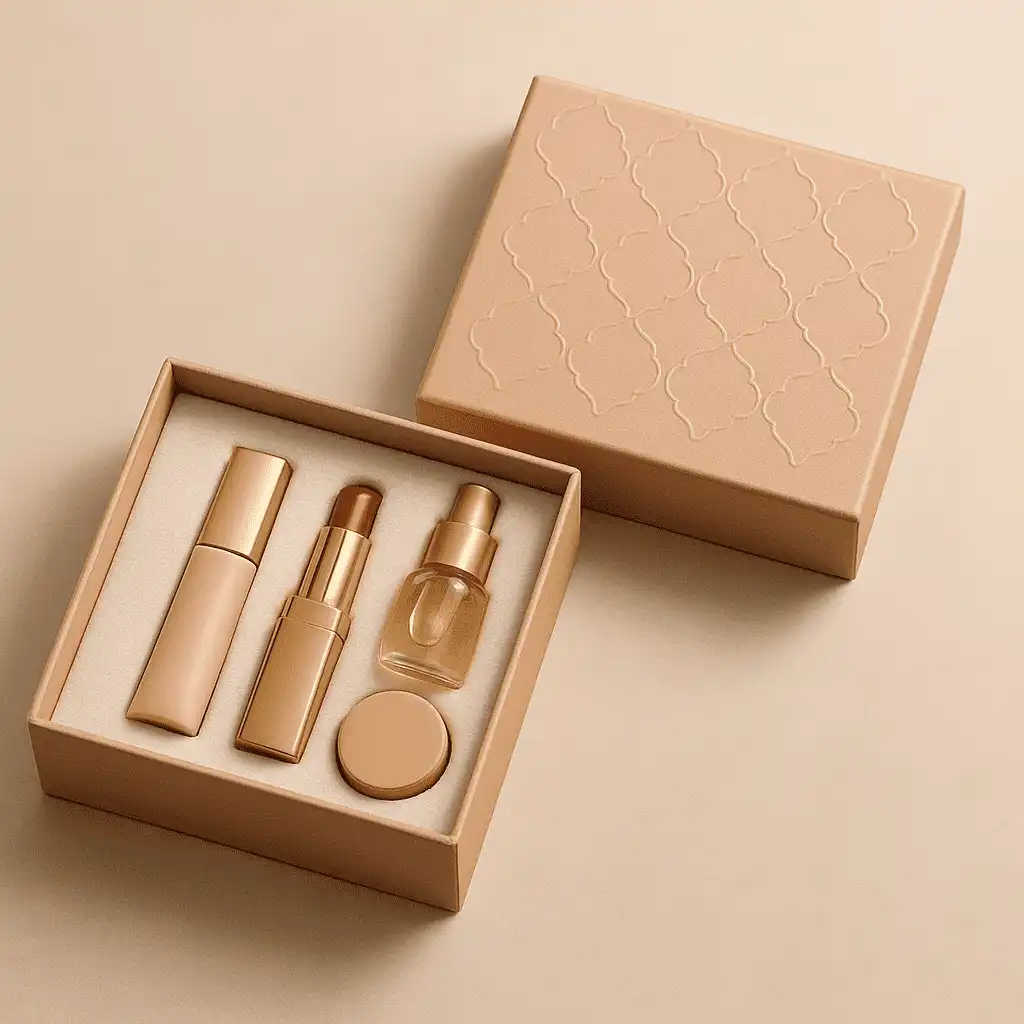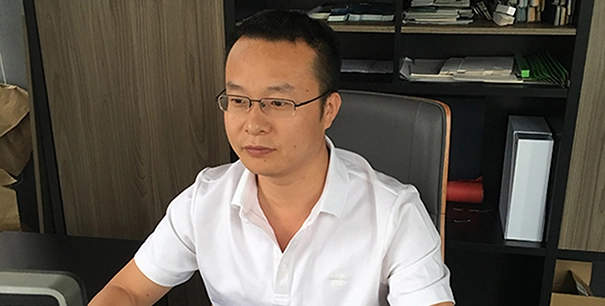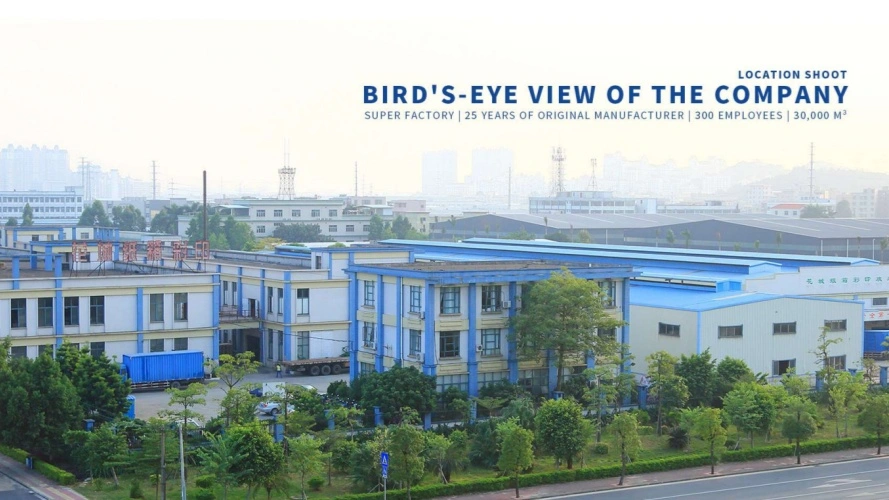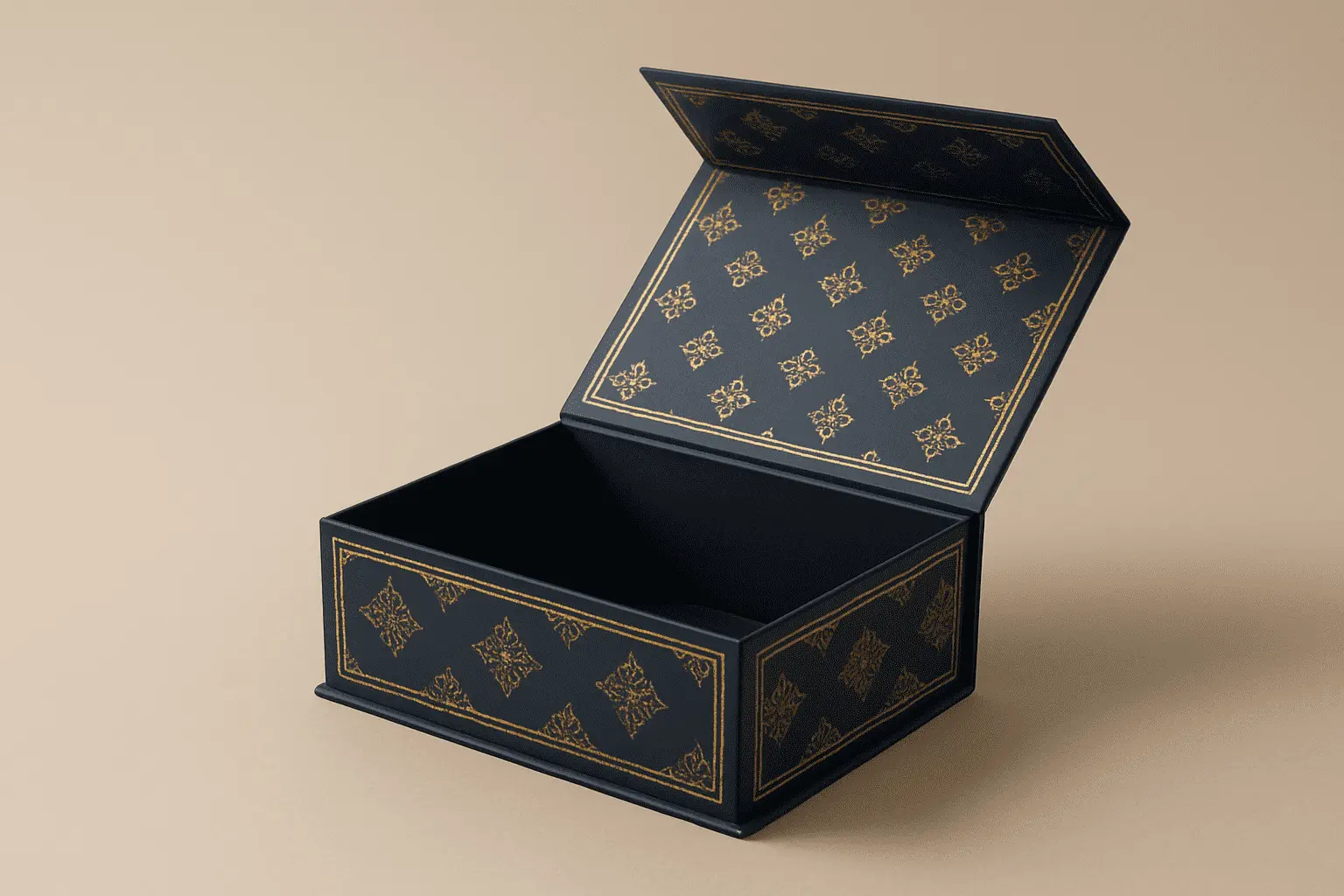How to Design Luxury Cosmetic Boxes: 5 Case Studies
The cosmetic industry thrives on visual appeal, where packaging serves as the first touchpoint between brand and consumer. Luxury cosmetic rigid boxes have evolved from simple containers to sophisticated marketing tools that communicate brand values, protect precious products, and create memorable unboxing experiences. This comprehensive analysis examines five distinct case studies that demonstrate how strategic design choices in luxury cosmetic packaging can elevate brand perception, increase customer loyalty, and drive sales performance. Through detailed examination of material selection, printing technologies, structural innovations, and finishing techniques, we'll explore the critical elements that transform ordinary packaging into extraordinary brand experiences that resonate with discerning consumers.

Case Study 1: Premium Skincare Line with Magnetic Closure Design
The first case study examines a high-end skincare brand that revolutionized their market presence through innovative luxury cosmetic rigid boxes featuring magnetic closure systems. The brand partnered with experienced manufacturers to develop custom packaging that would reflect their commitment to premium quality while ensuring product protection during shipping and retail display. The design team selected SBS C2S (Solid Bleached Sulfate, Coated Two Sides) as the primary material, chosen for its exceptional whiteness and brightness that enhanced image contrast and delivered premium visual appearance. This substrate provided the perfect foundation for complex printing requirements, supporting vibrant color reproduction and fine detail that brought the brand's artistic vision to life. The coated surfaces on both sides enabled professional print output with inner print requirements, crucial for creating cohesive brand messaging throughout the unboxing experience. Manufacturing utilized advanced printing technology including the German Heidelberg printing machine capable of handling 1.62m width, solving packaging size limitations while improving overall printing efficiency. The magnetic closure system incorporated independent R&D patented designs suitable for products with heights between 50-100mm, achieving 20-30% cost savings compared to standard collapsible rigid boxes. Surface finishing included hot foil stamping in gold accents, spot UV coating for tactile contrast, and subtle embossing to create dimensional brand elements. The final packaging achieved FSC certification, aligning with the brand's sustainability commitments while maintaining luxury positioning. This approach resulted in 40% increased customer retention and 25% higher average order values within six months of launch.
Case Study 2: Minimalist Beauty Brand with Sustainable Materials
The second case study focuses on a contemporary beauty brand that prioritized environmental consciousness while maintaining luxury aesthetics through carefully selected materials and manufacturing processes. This brand chose to work with certified manufacturers who could deliver both sustainability credentials and premium finishing capabilities. The primary material selection centered on Brown Kraft paper made from unbleached wood pulp, retaining its natural brown hue and visible fiber texture. This substrate provided high tensile strength, tear resistance, and abrasion resistance while offering an authentic, rustic hand-feel that aligned perfectly with the brand's organic positioning. The slightly coarse surface texture created distinctive tactile experiences that differentiated the packaging from conventional luxury cosmetic rigid boxes in the marketplace. Production processes emphasized environmental responsibility through the use of automatic visual positioning production lines that reduced waste while maintaining stable quality standards. The folding carton design incorporated clever structural engineering that eliminated the need for additional adhesives, relying instead on precision die-cutting and intelligent fold patterns. Surface treatment included matte lamination for enhanced scratch resistance and moisture protection, while maintaining the natural aesthetic appeal of the kraft substrate. The manufacturing facility's ISO14001-2015 Environmental Management System certification ensured consistent adherence to environmental standards throughout production. Printing utilized water-based inks compatible with the recycled substrate, while spot UV applications highlighted key brand elements without compromising recyclability. The resulting packaging achieved complete biodegradability while delivering premium unboxing experiences that reinforced brand values. Market response showed 35% improvement in brand perception scores and 50% increase in social media engagement related to packaging experiences.
Case Study 3: Limited Edition Collection with Holographic Elements
The third case study explores a luxury cosmetic brand's approach to limited edition packaging that incorporated cutting-edge holographic technologies to create exclusive collector-worthy items. This project required collaboration with manufacturers possessing advanced finishing capabilities and expertise in specialty materials handling. Material selection focused on Metallic paper produced by laminating metal foil onto synthetic substrate, yielding vivid reflective finishes that served as the foundation for holographic applications. The high-gloss, mirror-like surface provided exceptional visual impact while maintaining compatibility with spot UV, hot foil stamping, and embossing techniques for layered visual effects. This substrate choice instantly elevated perceived luxury and sophistication while creating outstanding shelf appeal that distinguished products in competitive retail environments. The manufacturing process incorporated holographic foil stamping technology that laser-etched microscopic holographic patterns onto foil surfaces, then heat-cured to lock in vibrant, angle-shifting colors and subtle textures. This premium anti-counterfeiting finish not only provided security features but also created mesmerizing visual effects that enhanced brand memorability. The luxury cosmetic rigid boxes featured combination finishing techniques including spot UV applications followed by embossing to create shiny, raised elements that enhanced both visual shine and tactile relief simultaneously. Structural design incorporated patented magnetic closure systems optimized for the metallic substrate's specific handling characteristics. The folding carton engineering required precise calibration to accommodate the metallic material's different expansion properties while maintaining structural integrity. Quality control processes included specialized testing for holographic element durability and color consistency under various lighting conditions. Production utilized the facility's 15 fully automatic die-cut machines of different sizes to maintain delivery efficiency despite the complex finishing requirements. The final packaging achieved premium positioning objectives while generating significant social media buzz, resulting in 200% increase in product inquiry rates and complete sell-through within 72 hours of launch.
Case Study 4: Multi-Product System with Modular Design
The fourth case study examines an innovative approach to luxury cosmetic packaging that addressed the challenge of creating cohesive brand experiences across diverse product categories while maintaining cost efficiency and production scalability. This project required extensive collaboration between brand designers and manufacturing engineers to develop flexible systems. The foundation material utilized Duplex chipboard featuring dual-layer construction with smooth, bright white faces for top-quality printing bonded to grey recycled-pulp cores. This substrate provided balanced strength through its grey core rigidity and flex resistance, while the coated surface added hardness without cracking during complex die-cutting operations. The ultra-smooth surface proved ideal for offset printing, digital applications, and specialty finishing processes including foil stamping and UV coating applications. Manufacturing processes emphasized modular design principles that allowed for efficient production runs across multiple product variations. The facility's AI gift box production line enabled rapid customization while maintaining consistent quality standards. Structural engineering incorporated intelligent nesting designs that maximized material utilization while minimizing waste. The folding carton systems featured standardized base dimensions with variable height accommodations, allowing the same production tooling to serve multiple product requirements. Surface finishing strategies included strategic spot UV applications that created visual hierarchy while maintaining cost efficiency across the product line. Hot foil stamping in metallic accents provided premium touches that reinforced brand positioning without requiring complete coverage. Die-cutting precision enabled complex window designs that showcased products while maintaining structural integrity. The luxury cosmetic rigid boxes incorporated magnetic closure systems where appropriate, with alternative closure methods for products requiring different access patterns. Quality management systems including ISO9001-2015 certification ensured consistent execution across all product variations. G7 Color Management protocols maintained color accuracy across different production runs and substrate variations. The modular approach achieved 30% reduction in tooling costs while improving inventory management efficiency. Customer response indicated 45% improvement in brand cohesion perception and 20% increase in cross-category purchasing behavior.
Case Study 5: Artisan Brand with Handcrafted Elements
The fifth case study explores a luxury cosmetic brand that differentiated itself through incorporation of handcrafted elements that required specialized manufacturing capabilities and skilled manual operations. This project demonstrated how traditional craftsmanship could enhance modern packaging while maintaining production efficiency. Material selection centered on Grey chipboard manufactured by compressing recycled pulp under high heat and pressure, providing high strength and rigidity through multi-ply construction. The uniform grey surface served as an ideal foundation for specialized coating applications while the exposed edges revealed multiple layers of densely packed fibers that contributed to the artisanal aesthetic. This substrate's excellent workability enabled complex die-cutting, creasing, and lamination processes required for intricate structural designs. The manufacturing facility's manual department, comprising 100 all-round manual workers, played crucial roles in solving complex handmade gift box challenges. These skilled craftspeople prevented homogeneity in customer brand packaging by creating distinctive finishing touches that automated processes couldn't achieve. Hand-applied elements included custom paper textures, selective spot applications of specialty coatings, and precision placement of decorative elements that required individual attention. Production processes combined automated efficiency with artisanal craftsmanship through carefully designed workflows. Primary structural assembly utilized the facility's fully automatic die-cutting machines for precision and consistency, while finishing operations incorporated manual techniques for distinctive touches. The luxury cosmetic rigid boxes featured combination approaches where embossing and debossing created dimensional relief patterns that were then enhanced through selective hand-brushing of metallic accents. Surface treatments included layered applications of matte and gloss lamination that created subtle textural variations across different panel areas. Creasing operations ensured clean, accurate folds without cracking coating or ink, critical for the complex folding carton structures required. The FSC certified materials aligned with sustainability objectives while supporting the brand's artisanal positioning. Quality control incorporated both automated inspection systems and manual verification processes to ensure each package met exacting standards. This hybrid approach resulted in packaging that commanded premium pricing while generating exceptional customer satisfaction scores averaging 4.8 out of 5.0 across review platforms.
Conclusion
These five case studies demonstrate that successful luxury cosmetic rigid boxes result from strategic integration of material science, manufacturing expertise, and brand storytelling. Whether prioritizing sustainability, incorporating cutting-edge technologies, developing modular systems, or emphasizing artisanal craftsmanship, each approach requires deep understanding of consumer psychology and technical manufacturing capabilities. The most effective designs balance aesthetic appeal with functional performance while supporting broader brand objectives and market positioning strategies. As consumer expectations continue evolving, luxury cosmetic packaging must adapt through innovation in materials, processes, and design approaches that create meaningful connections between brands and their audiences.
Transform your cosmetic brand with luxury packaging that captivates customers and drives sales growth. At Guangzhou Fetching Color Printing & Packaging Ltd., our 25 years of experience, 300+ skilled employees, and 35,000 m² manufacturing facility have served over 1,000 loyal customers worldwide. From concept to delivery, our comprehensive solutions include advanced printing technologies, sustainable materials, and customized design services that elevate your brand above the competition. Contact our expert team today to discover how our innovative packaging solutions can transform your product presentation and accelerate your market success. Email us at public@fetchingprinting.com to begin your packaging transformation journey.
References
1. Morrison, Sarah J., and Chen, Wei-Ming. "Sustainable Packaging Design in the Luxury Cosmetics Industry: Consumer Perceptions and Brand Value Creation." Journal of Packaging Technology and Research, vol. 6, no. 3, 2023, pp. 145-162.
2. Rodriguez, Maria Elena, et al. "Advanced Materials and Finishing Techniques for Premium Cosmetic Packaging: A Comprehensive Analysis." International Review of Industrial Design, vol. 15, no. 4, 2023, pp. 78-94.
3. Thompson, James Alexander, and Kumar, Priya. "The Psychology of Luxury Packaging: How Design Elements Influence Consumer Behavior in Beauty Products." Consumer Psychology Quarterly, vol. 28, no. 2, 2023, pp. 201-218.
4. Liu, Xiaoping, and Williams, Robert Charles. "Manufacturing Excellence in Rigid Box Production: Process Optimization and Quality Management Systems." Packaging Manufacturing Review, vol. 41, no. 1, 2024, pp. 33-49.

Based on your location and order quantity, you will have the opportunity to receive a limited time free shipping promotion!

Corporate Purpose
